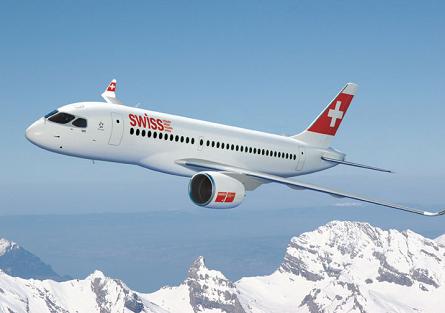Bombardier finally cemented its decision to go ahead with its 110/130-seat CSeries twinjet in March when launch customer Lufthansa firmed up its Farnborough 2008 deal for up to 60 aircraft. The airline has subsequently been joined by lessor LCI, which placed orders and options for 40 aircraft, taking total commitments for the Pratt & Whitney PW1000G GTF-powered airliner to 100.
Bombardier is pushing the CSeries as a small mainline jet, with the lower end of the Airbus A320 and Boeing 737 families firmly in its sights. The new jet, which is due to enter service in the second half of 2013, also threatens the top end of Embraer's successful E-Jet series - so it is no surprise that the Brazilian airframer confirmed this year that it is evaluating how and whether to respond to the threat.
 |
|---|
Although the A318/A319 and 737-600/700 could find themselves fighting the CSeries, the one airline customer announced to date - Lufthansa - intends to use the aircraft to replace the 97-seat BAE Systems Avro RJ100s operated by its Swiss International Air Lines arm.
How the sales map will eventually look remains to be seen, but with Bombardier claiming "over 150 customers showing strong interest" it is likely that the new twinjet will be adopted by some network carriers for their thinner short-haul routes, or perhaps for some of their longer sectors. Bombardier sees a long-term market for 6,300 aircraft in the CSeries category over the next 20 years.
With the full launch under its belt, Bombardier is undertaking the detail design phase and aims to begin the product definition release phase around a year from now. The target is for the certification process to begin during the fourth quarter of 2011. Flight test and type certification is expected to last 18 months.
The airliner's wing and empennage is predominantly carbonfibre, although advanced alloys are used for the wingbox ribs and slats with titanium employed for pylon and gear attachments. The fuselage, which has a five abreast cross-section, is of aluminium lithium construction with carbonfibre elements such as the aft section and pressure bulkhead.
 |
|---|
© Bombardier |
Rockwell Collins is supplying its Pro Line Fusion system for the CSeries five-screen, sidestick equipped flightdeck.
Powered by two 21,000lb (93.5kN) or 23,300lb-thrust PW1500G GTFs, Bombardier says the family will offer a 20% fuel burn advantage and 15% better cash operating costs than its in-production rivals, with direct maintenance costs expected to be 28% better.
Final assembly will be undertaken at an all-new plant at Bombardier's Mirabel site near Montreal. Sections will be supplied from sister divisions and outside partners in North America, Europe and China.
Source: Flight International
















